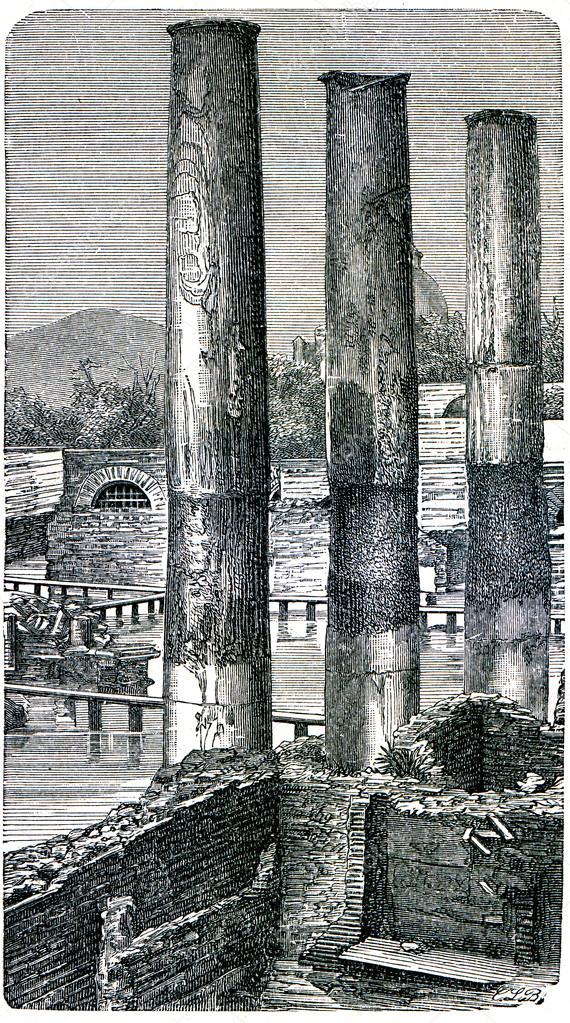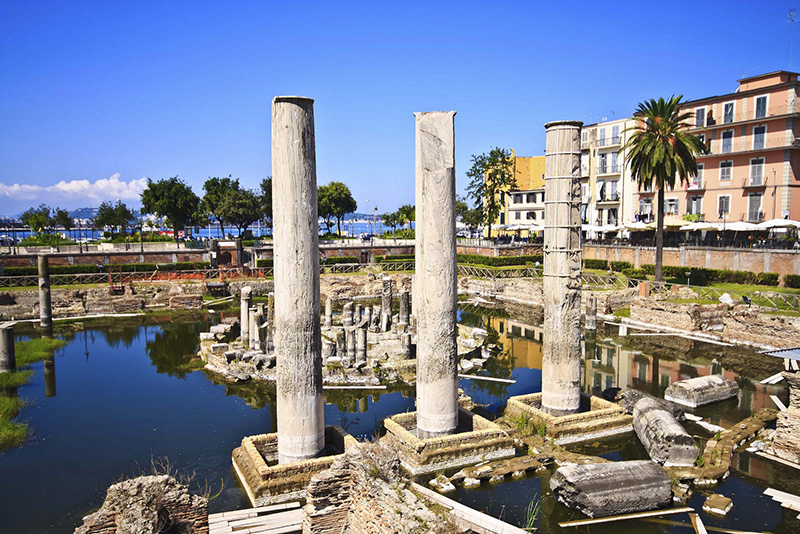Walking down the waterfront in Pozzuoli, you cannot stumble upon three ancient column made of marble that, as nobles as a God, stand above the city. When were they built? And what do they represent? Let's find out!
History of the Serapide's Temple or 'Macellum'

In the early 50s of the 18th century, one of the main projects of Charles III of Bourbon, was to bring to light some important archeological discoveries through an excavation campaign, following the recent ones of Pompei and Ercolano. One of these discoveries, in fact, was the statue of the Egyptian God Serapide, which gave the name to the imperious altar made of three columns that, first, was identificated as a vineyard and that, then, was identified as an ancient market of the Roman Period, once called "macellum" (from latin: market).
The structure of the Serapide's Temple

Around the 1st and the 2nd century a.D, a brand-new type of building raised on the ancient city of "Puteoli" (Pozzuoli). It was a large square-shaped yard, surrounded by an arcade on which these three columns (once called "tabernae") completely overlooked. They firstly were 36 with 5,90 metres of height, made of grey granite and blank marble; the center was composed by a little round-shaped temple called "tholos" with 16 columns made of African marble and decorated with sea themes. On the opposite side of the entrance, there was a recess richly decorated as well; it was overlooked by 11 columns, 11,94 metres high.
Market or Temple?

It is only at the end of the 20th century that new studies on the structure of the ancient market brought to light the bradisism phenomenon, from which the market (or the temple) of Pozzuoli differs from those of Rome and Capua. Thanks to these studies, in fact, it has been possible to identify it as third in order of importance; there is only one question to answer: is it a temple or just a market?










Lascia un commento